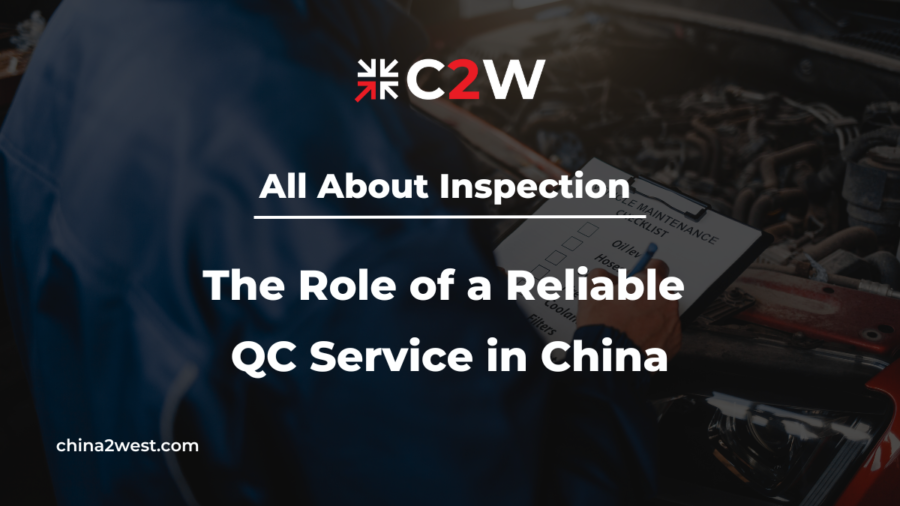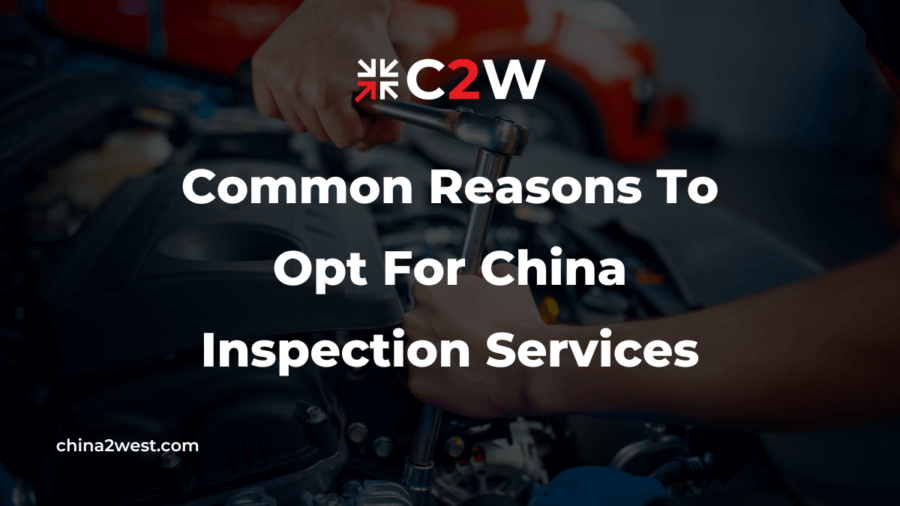Product inspection plays a crucial role in ensuring the quality and safety of products manufactured in China. As a major global manufacturing hub, China produces a vast array of products that are exported to markets worldwide. However, with the increasing complexity and volume of production, it has become more important than ever to have a reliable quality control (QC) service in place for product inspection in China. In this blog, we will explore the importance of product inspection and how a reliable QC service can help businesses ensure their products meet the necessary standards and regulations.
The Need for Quality Control When Manufacturing in China
China’s manufacturing capabilities are immense, but the sheer scale and diversity of its industries can pose challenges when it comes to maintaining consistent product quality. Quality issues, ranging from substandard materials to manufacturing defects, can have serious consequences for businesses, including financial losses, damaged reputations, and legal ramifications. To mitigate these risks, companies often enlist the services of QC professionals who can systematically inspect and verify the quality of products before they leave the factory.
Essential Process in Quality Inspections at the Factory
A well-designed product inspection checklist is the linchpin of a successful quality inspection process in China. This comprehensive tool serves as a roadmap for inspectors, guiding them through crucial checkpoints to ensure that the manufactured products meet the specified standards. Here’s a breakdown of key elements to consider when creating an effective product inspection checklist:
1. Document Review
The foundation of a robust quality control system is built upon a thorough review of all relevant documentation. Inspectors delve into quality certification documents, quality certificates, and test reports. This step ensures that the manufacturing process adheres to industry standards and that the end product meets or exceeds the quality benchmarks set forth in the documentation. Document review acts as a comprehensive checkpoint, instilling confidence in both manufacturers and buyers.
2. Quantity Verification
At the heart of quality control lies the meticulous verification of quantities. Inspectors go through an exhaustive process to ensure that every single product matches the details specified in the purchase order. This step is crucial in preventing discrepancies and ensuring that customers receive the exact quantity they ordered. Quantity verification not only safeguards against over or underproduction but also contributes to inventory accuracy.
3. Workmanship and Visual Appearance
Craftsmanship, a defining element of product quality, takes center stage during the visual check. Inspectors initiate the assessment by meticulously examining the product’s overall appearance, color, and construction. This attention to detail goes beyond meeting aesthetic expectations; it ensures that the product’s visual elements align with the intended design, reinforcing the brand’s commitment to excellence. A visually flawless product not only meets customer expectations but also enhances the brand’s reputation for quality.
4. Functionality and Performance
Beyond aesthetics, the functionality of a product is paramount. Quality control inspectors conduct rigorous function checks to ensure that each item performs as intended. This involves testing the product under real-world conditions to identify any potential issues that may arise during regular use. A thorough function check guarantees that the end-user receives a product that not only looks good but also performs seamlessly, contributing to overall customer satisfaction and loyalty.
5. Assembly Inspection
The synergy of individual components is critical in ensuring the overall functionality and reliability of a product. Assembly inspections play a pivotal role in verifying that each component is correctly integrated, contributing to the product’s overall performance. This step not only ensures the integrity of the final product but also minimizes the risk of malfunctions or defects due to faulty assembly.
6. Packaging and Labeling
The journey doesn’t end with the product itself; packaging and labeling are integral components of the quality control process. Inspectors verify that products are appropriately packaged to prevent damage during transit and that labels provide accurate information about the product. Packaging is not just about aesthetics; it plays a crucial role in protecting the product and conveying essential details to the end-user.
Useful Tips for Conducting a Quality Inspection in China
Conducting a quality inspection in China is crucial for ensuring that the products meet your standards and specifications. Here are five tips to help you conduct a successful and effective quality inspection:
Define Clear Specifications
Clearly define your product specifications and quality standards before the inspection. This includes details such as dimensions, materials, colors, packaging, and any other relevant criteria. Provide a detailed checklist to the inspection team so they can thoroughly evaluate each aspect of the product.
Communicate Expectations Clearly
Clearly communicate your expectations and standards to the factory or supplier well in advance of the inspection. Provide them with your product specifications, quality requirements, and any relevant documentation. This helps set clear expectations and encourages the supplier to take your quality standards seriously.
Plan Inspections at Critical Stages
Conduct inspections at key stages of the production process. These stages may include pre-production, during production, and pre-shipment. Inspecting at various stages allows you to catch and address issues early on, reducing the likelihood of defects in the final product. Pre-shipment inspections are particularly important to ensure that the entire production meets your standards.
Random Sampling and Testing
Use a statistically significant random sampling method to select products for inspection. Random sampling helps ensure that the inspection is representative of the overall production. In addition to visual inspections, consider implementing testing procedures for critical product characteristics. This may involve functional tests, safety tests, or other relevant tests depending on the nature of your product.
Choose a Reputable Inspection Agency
Consider hiring a professional third-party inspection agency with experience in the industry and region. These agencies can provide independent and unbiased assessments of product quality. Look for agencies with a good track record, positive client reviews, and relevant industry certifications.
Get Help from A Professional Product Inspection Partner in China
Product inspection is not just a necessity; it’s a strategic imperative for businesses operating in the global marketplace. By proactively implementing a robust inspection process, you can safeguard your brand reputation, build customer trust, and ensure the delivery of high-quality products to consumers worldwide. In the ever-evolving landscape of international trade, a commitment to product inspection in China is an investment that pays dividends in the form of sustainable business growth and success.
If you want to ensure that your products undergo a comprehensive inspection, partner with China 2 West. With an impressive 18-year track record in the dynamic Greater Bay Area of Southern China, we specialize in delivering reliable and professional product inspection services. Our commitment is to ensure that the products you manufacture and ship align seamlessly with the international quality standards that are integral to your expectations.
At China 2 West, we take pride in our seasoned QC team on the ground, equipped with the expertise to meticulously inspect every aspect of your products. This dedicated team is your assurance of meeting and exceeding the stringent quality benchmarks set by global standards. Contact us today to learn more about our product inspection services.




